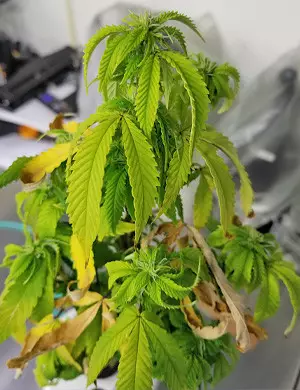
How to Stop Algae from Growing in Hydroponics
Last updated: 29 July 2021

Algae is a necessary evil in any hydroponic system. So while it’s no use dreaming about running a completely algae-free environment, we can teach you a couple of tricks to stop algae from growing in hydroponics and not let the problem spin out of control.
To stop algae from growing in hydroponics, prevent any light from getting inside the system, use clean water, change it regularly, keep its temperature stable, and use UV sterilizers, as well as such organic methods of algae control as hydrogen peroxide, grapefruit seed extract, and barley straw. Read on for details!
Algae in Hydroponics: What is it Exactly?
If you notice some green slime on your slabs of rockwool or a thin green film on the surface of the water inside the reservoir, that’s algae.
Algae – pronounced al-jee (or al-gee in British English) – are small, single-celled or sometimes even multi-celled organisms. They’re basically plants, although they have no roots, stems, or leaves. Like any other plant, algae live by photosynthesis. There can be no algae in total darkness, but in a hydroponic system, they usually find enough light to survive and sometimes proliferate.
Algae can also be seen in soil and coco grows if the medium is constantly moist, but only on the surface. They don’t live inside a solid medium where there’s no light, so they can’t cause any real damage there. Hydroponics, on the other hand, is a different story.
Is Algae Bad for Cannabis Plants?
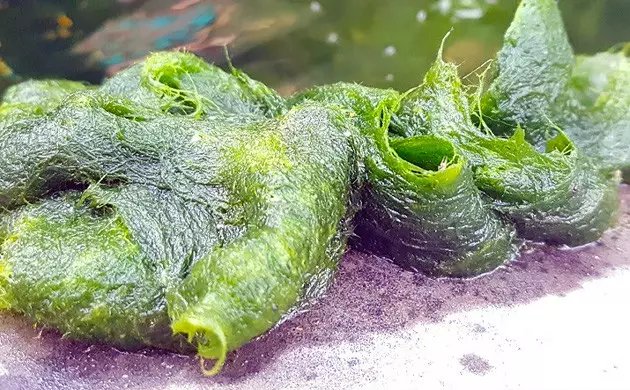
Algae in hydroponics can harm a marijuana plant in a variety of ways:
- Competition for oxygen. Algae need oxygen for photosynthesis, and when they multiply beyond control, they consume too much dissolved oxygen from water, thus robbing your weed of it.
- pH fluctuations. Like any other plant including cannabis, algae consume CO2 during the day (pH goes up) and O2 during the night (pH goes down). These pH swings can be enough to hinder nutrient uptake of marijuana plants, reducing their health and vigor and leading to such symptoms as spotty leaves.
- Clogging the hydroponic system. A thin film of greenish slime on the walls of reservoirs, containers, pumps, pipes, and tubes can become thick enough to clog them. This will interfere with the supply of water, air, and nutrients to the roots of your cannabis plants.
- Inviting anaerobic pathogens. By depleting the water of dissolved oxygen, algae create good conditions for the proliferation of bacteria and fungi that prefer an oxygen-free environment. These bad microbes then attack the roots.
- Facilitating pest infestations. Algae blooms attract pests such as fungus gnats, whose larvae can infest the roots of weed plants and even eat their way into the stems.

- Compromising roots. In severe cases, algae can cover the root ball itself, virtually ‘choking’ it. This also weakens the roots and makes them more susceptible to harmful microorganisms.
Symptoms of Algae in Hydroponics


The surest way to know whether your hydroponic system has become infested with algae is by sight and smell, so be sure to check regularly. However, even if you fail to do so, your plants will show you that something’s amiss.
This could be through symptoms of water stress, such as drooping leaves and generally ‘tired’ looks, as well as wilting. Alternatively, it could be the yellowing of leaves and brown spots on the edges and elsewhere. Still, it’s best not to let the issue progress to the point that it affects leaves. Besides, most symptoms on leaves are too nonspecific to determine the exact cause.
How to Prevent Algae Growth in Hydroponics
While an algae-free environment is unattainable (especially in organic growing), good hygiene and other methods of algae control can help a lot in preventing algae growth in hydroponics.

Use Clean Water
Many growers use tap water for their hydroponic setups. In this case, it’s standard good practice to let it dechlorinate for 24-48 hours. Don’t expose the water to light during this time or to too high temps in order to discourage algae growth.
Obviously, you should never use rainwater or water taken from lakes, ponds, streams, etc. Although algae will sooner or later invade your hydroponic system anyway, don’t make things THAT easy for them.
Also, completely change your nutrient solution on a regular basis. Here’s an example of a popular schedule: perform the first change after 10 days from seed/clone, then every 14 days until your plants reach 12 inches (30cm), then every 7 days.
Keep Water Temperature Within Acceptable Range
While the air temperature in your grow tent will probably oscillate somewhere around the 77°F (25°C) mark, your water tank temp should be cooler. At higher temperatures, less oxygen gets dissolved in water, and various bad microbes love both the warmth and the lack of oxygen. This is also true of algae.
So, if you have an algae problem, you should probably aim for slightly cooler temps than even the roots of your weed plants prefer. Here are some numbers for you:
- 65–79°F (18–26°C) – acceptable for hydro setups in general
- 70–75°F (21–24°C) – ideal for the health and the growth of your plants
- 65–68°F (18–20°C) – acceptable for roots and uncomfortable for algae
Does Hydrogen Peroxide Kill Algae?

If applied correctly, hydrogen peroxide will kill algae and not harm marijuana plants. This colorless liquid is almost the same as water but with one extra atom of oxygen. Its formula is H2O2.
When you add it to the nutrient solution, hydrogen peroxide quickly decomposes, releasing oxygen into the reservoir. Raised levels of oxygen are toxic for algae, bacteria, and fungi, but beneficial for the roots of cannabis plants.
To achieve good results, add 3 ml/l (or 2-3 tsp/gal) of 3% hydrogen peroxide to the whole volume of water in your hydroponic system every 4 days.
Note: Hydrogen peroxide is often sold in concentrations of 3 to 10%. However, these solutions often contain stabilizers, so it’s best to use a 35% food-grade concentrate that’s also commercially available. Don’t forget to dilute it by adding 11 parts of water to 1 part of the concentrate before use.
It’s also recommended to use hydrogen peroxide to clean all inner surfaces of your hydroponic system between grow cycles or res changes. This also helps to remove algae.
Barley Straw
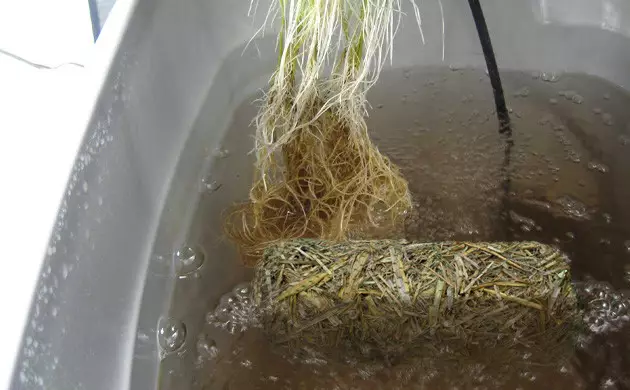
Barley straw – sold in bales, mats, or even rafts (which are meant to float on the surface) – is a clever way of introducing hydrogen peroxide into your hydroponic setup. When decomposing in the presence of oxygen – that is, in the nutrient solution oxygenated by a water pump – barley straw slowly but constantly releases small amounts of hydrogen peroxide. This may be enough to stop algae from growing in hydroponics uncontrollably.
Grapefruit Seed Extract
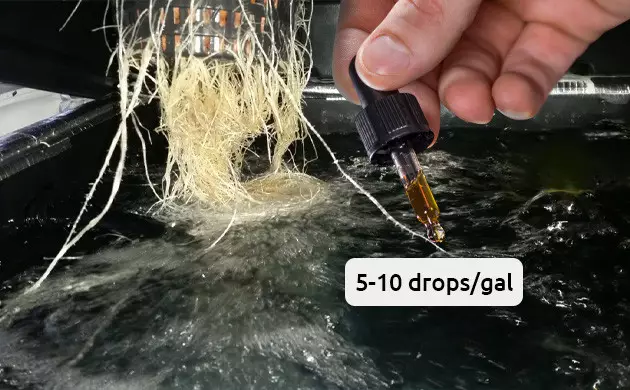
Another organic way of algae control in hydroponics is grapefruit seed extract, which is routinely used for water purification in municipal water sources, as well as in pools, fish ponds, etc.
We recommend trying a concentration of 5-10 drops per gallon, but keep in mind that hydroponics is still a novel application for grapefruit seed extract, so be careful. Internet sources cite a study claiming that 75-200 ppm concentrations of grapefruit seed extract aren’t dangerous for salmon in fish tanks. The same levels likely won’t be detrimental to cannabis plants either.
UV Sterilizers
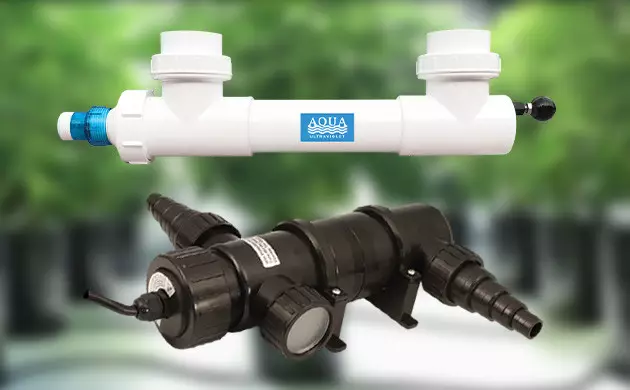
A UV sterilizer (aka UV clarifier) is a tube light that you simply immerse in your water reservoir, plug in, and keep on for a few hours a day, depending on how much algae you have in your hydroponic system. A UV sterilizer radiates light in the ultraviolet band of spectrum. This is not enough to make water sterile, but enough to slow down or stop algae from growing in the reservoir.
No Light Leaks is the Key
Shading your hydroponic system from light is the single most important aspect of algae control. When shopping for a growing kit, make sure that the reservoir and all containers, pipes, tubes, and connections are made of dark-colored materials and that every cover is light-proof.
If this isn’t enough, try to cover every part of your setup with a dark-colored tarp, cloth, or film. Think of some kind of cover for rockwool or whatever medium you use in your net pots. If you do all this, you will drastically reduce the amount of light that gets inside. This isn’t enough to get rid of algae in hydroponics for good (nothing is), but it will prevent or stop serious algae problems.
Algae Control in Hydroponics Requires Your Constant Attention
If you want to stop algae from growing in hydroponics, your efforts will only get you so far. But that doesn’t mean you should just quit and let this nasty green stuff overrun your hydroponic system. Apply all of the methods listed above, be consistent about it, and you’ll be able to get rid of algae in hydroponics to the point where it won’t affect your marijuana crop.
Herbies Head Shop expressly refuses to support the use, production, or supply of illegal substances. For more details read our Legal Disclaimer.
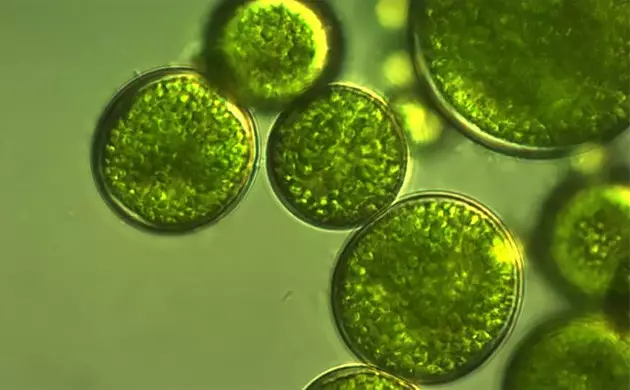
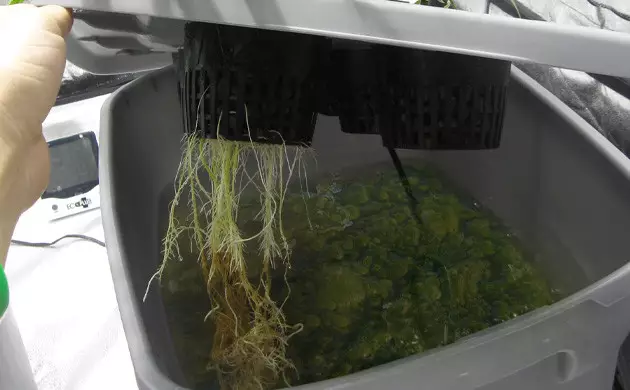
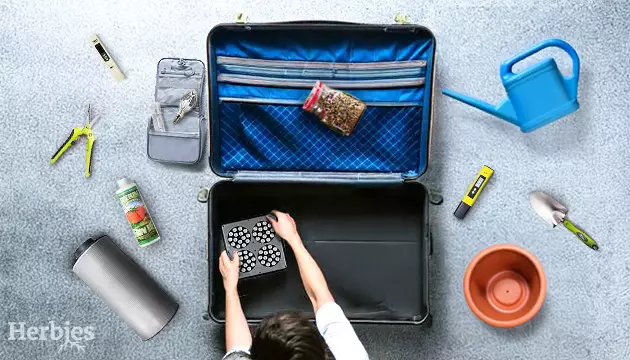
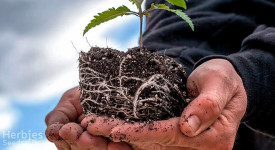
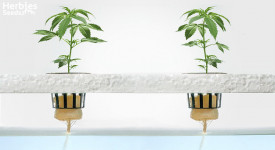
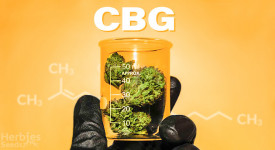








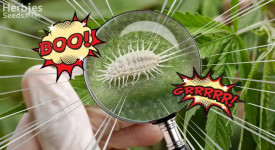
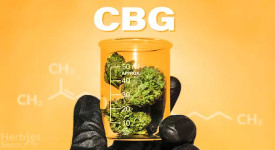
Thank you for leaving a comment for us!
Your feedback will be posted shortly after our moderator checks it.
Please note that we don’t publish reviews that: